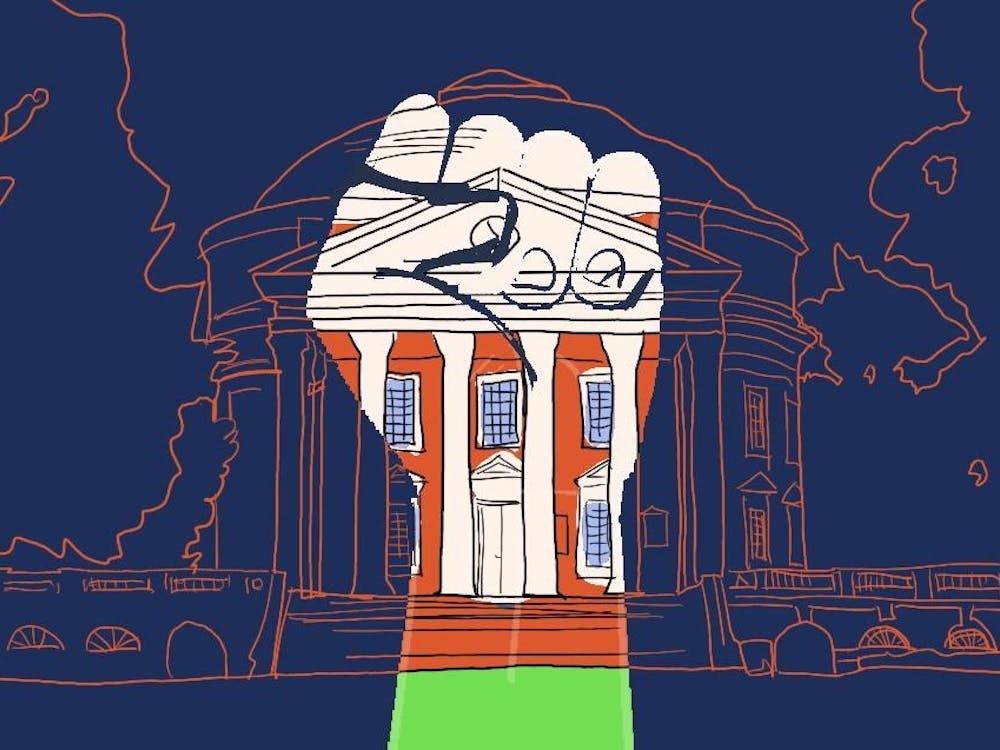Sexual misconduct on college campuses has garnered much recent national attention. This is especially true since the April 2011 release of the U.S. Department of Education Office of Civil Rights (OCR) document — the Dear Colleague Letter (DCL) — setting out expectations regarding institutional response to sexual misconduct. It has caused every institution to reevaluate policies and procedures. U.Va. was in the middle of a comprehensive policy review when the DCL came out, and we incorporated its guidance into our revised policy issued in summer 2011. While one could write a piece on the impact of the DCL on higher education, my hope in writing today is to demystify what happens on Grounds when a case of sexual misconduct is reported to the Office of the Dean of Students (ODOS).
By “sexual misconduct,” I refer to any form of gender-based violence. This term includes sexual assault but also encompasses other misconduct such as stalking, relationship violence and harassment. Here, I focus on what represents a primary concern among our students: reports of sexual assault. Our policy against misconduct, however, includes many other behaviors.
Reports of sexual misconduct come to ODOS from several different sources. Sometimes students stop in or send an email asking to talk. We also may be called by the University Hospital or by the police with information about a victim, but only if the victim has provided express permission. Sometimes, we receive a “blind report,” meaning that the student was assisted by law enforcement but asked that personal information be withheld. In those cases, we rely on the police to work with that victim and encourage that person to come in to talk. ODOS has a healthy collaborative relationship with our police department, which has allowed us to connect with many more students. We also receive anonymous and third-party reports sent through the sexual violence website. In the case of an anonymous report, if the reporter has provided contact information, we reach out to offer support.
With student victims, we have four paramount concerns: safety, emotional and physical health, academic support and reporting options. In terms of safety, we want to know: Does the victim feel safe in her residence? Is she concerned that she may be targeted again? We can provide a student with emergency relocation services if necessary or we can move the alleged perpetrator if s/he lives on Grounds. We can also issue a no contact directive, an order from our office requiring the alleged perpetrator to have no contact of any kind with the victim. Violation of the directive is a breach of the University’s Standards of Conduct. We can also work with our police department to assist a student in obtaining a legally enforceable Protective Order mandating no contact.
Next we shift to a discussion of health. If she has not been to the hospital and the 72-hour window for evidence collection has not closed, we strongly advise the student to go to the University Hospital for an evaluation and evidence collection (also known as a PERK kit). Students must go to U.Va. because it is currently the only facility in the area with Sexual Assault Nurse Examiners (SANE) who may perform these specialized evaluations. If that window has closed, we still encourage a student to seek medical attention to ensure s/he has no injuries and s/he is protected against STIs and pregnancy. We also encourage students to address their emotional needs and pursue counseling through CAPS, the Women’s Center, or local agencies or clinicians.
Academic support represents another primary concern. Often, it is the need for this support alone that actually gets students in to see us. We work closely with the academic deans in all of the schools to obtain assistance for our students discretely and effectively.
Finally, we talk to the student about reporting options. If the student has already been working with law enforcement, we focus our attention on supporting them through that process. If not, we discuss the process and ask that they meet with the Victim/Witness Coordinator in the University Police Department who can help explain law enforcement options. Although it is our preference that a report be made to police (who have greater ability to collect evidence), we will not force someone to do so. If the alleged perpetrator is also a student, we discuss the Sexual Misconduct Board (SMB) and the options available for reporting within the University. These options are separate and independent of one another and can be pursued concurrently if a student wishes to do so.
Our focus throughout is on the student and meeting his or her needs. Being victimized makes one feel helpless and out of control. Providing an opportunity to regain some control by making decisions about how the situation will be handled allows that victim to move forward on their path to healing.
At the same time, we have a duty to evaluate each situation to ensure that the community is also not at risk. In some cases, there may be a need for the University to take action without the support of the victim. In such cases, we balance the demands of community safety while continuing to meet the needs of the victim.
Although we have great faith in our response to incidents of sexual violence, no response can erase the pain and trauma an incident may have caused. In the coming year, we hope to maintain this strong response while also strengthening our efforts around prevention, including soon welcoming a new staff member to help coordinate prevention efforts in the hope that fewer students will suffer the pain of victimization.
Nicole Eramo is an associate dean of students and the chair of the Sexual Misconduct Board.






